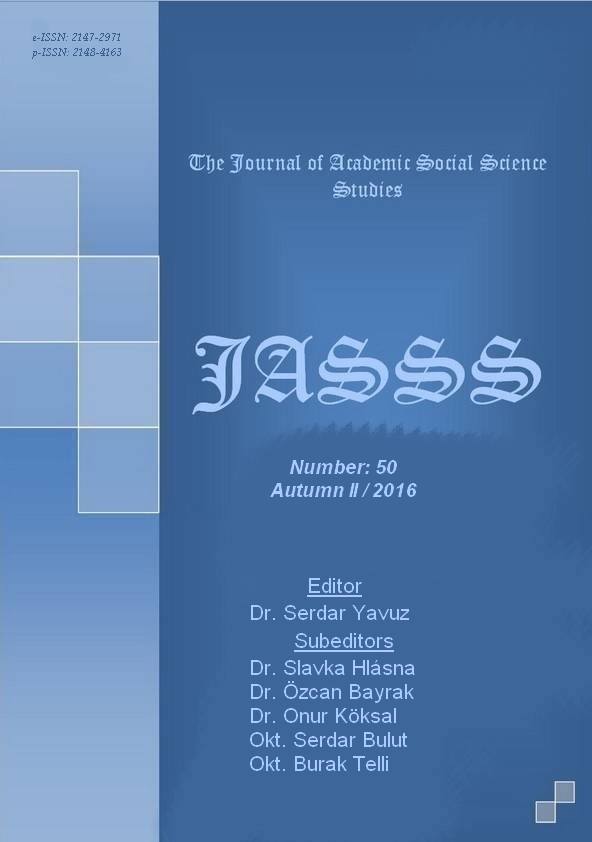Author :
Abstract
Geç Ortaçağ’da İber Yarımadası’nda Hıristiyanların Endülüs-İslam kentlerini ele geçirmelerinden sonra yeni inşa edilen dini ve sivil yapılarda Endülüs-İslam sanatı etkileri ortaya çıkmıştır. Hıristiyan ideolojisinin temsil edildiği kraliyet ailesinin istekleri doğrultusunda, kentsel projeler, alt yapı sistemleri, dini ve sivil yapılar İslam mimari, sanat, teknik, estetik ve zevkleri tercih edilerek planlı olarak gerçekleştirilmiştir. 19. yüzyıla kadar uzanan bu etkiler sadece İspanya sınırlarında kalmamış, aynı zamanda Güney Amerika ve Meksika’ya kadar ulaşmıştır. 12.-16. yüzyıllar arasında yaklaşık 500 yıl devam eden İspanya’da Hıristiyan sanatı üzerindeki Endülüs-İslam etkileri sanat tarihi literatüründe “Mudejar üslubu” ya da “Mudejar sanatı” (arte mudéjar) olarak adlandırılmıştır. Hıristiyan sanatı üzerindeki İslam etkilerinin “Mudejar” olarak adlandırılması ilk olarak 19. yüzyılda ortaya çıkmış, İspanya’yı diğer Avrupa ülkelerinden farklı kılan “İspanya’ya özgü Hıristiyan sanatı” olarak yorumlanmıştır. Bu dönemden itibaren “Mudejar üslubu” kavramı birçok tartışmaları da beraberinde getirmiştir. “Mudejar” sözcüğü terim olarak Hıristiyan idaresinde yaşayan Müslümanlara karşılık gelmesine karşın sanat tarihinde “Mudejar” kavramının kullanımı ile ilgili belirsizliklerle karşılaşılmaktadır. Literatürde “Mudejar sanatının”, Hıristiyan ve İslam sanatının sentezlenerek kullanılması ile ortaya çıkan yeni bir üsluba mı, yoksa Hıristiyan sanatındaki İslam estetik özelliklerine mi karşılık geldiği anlaşılamamaktadır. Üstelik bu belirsizlikler “Mudejar kenti” ve “Mudejarların kenti” kavramlarında da görülmektedir. Bu makalede, “Mudejar” kavramı etimolojik açıdan incelenerek, tarih yazımında “Mudejar” kavramının nasıl ele alındığı kapsamlı olarak ortaya konmuştur. Sanat tarihi literatüründe “Mudejar sanatı” ve “Mudejar kenti” kavramları kuramsal açıdan incelenerek, konu eleştirel bir yaklaşımla tartışılmıştır. Araştırmada, “Mudejar” sözcüğünün Müslümanları işaret etmekten öteye gidemeyen bir kavram olduğu ve “Mudejar üslubu”nun Hıristiyan sanatındaki İslam kültürüne ait estetik anlayışın kendisi olduğu anlaşılmıştır.
Keywords
Abstract
In late Middle Age Era, in the Iberian Peninsula, the influences of Islamic Art of al-Andalus appeared in newly-built religious and civil buildings after Christians captured the Islamic cities of al-Andalus. Urban projects, infrastructure systems, religious and civil buildings were built in a planned manner in a style in which the Islamic architecture, art, technique, aesthetic and delight was apparent in the direction of the desires of the royal family with whom the Christian Ideology was represented. These influences stretched until 19th century, and did not remain limited with the Spanish borders, and also stretched to South America and Mexico. The Islamic art of al-Andalus influence on the Christian Art in Spain between the 12th and 16th Centuries, which lasted nearly for 500 years, is called as the “Mudejar style” or as the “arte mudéjar” in the literature of History of Art. The Islamic influences on the Christian art being called as “Mudejar” were first introduced in 19th Century, and were interpreted as the “the Christian art that is specific to Spain”, which made Spain different from the other European countries. As of this period, the “Mudejar Style” brought with it many debates so far. Although the term “Mudejar” refers to the Muslims living under the rule of Christians, there are uncertain situations about the use of it in the History of Art. It is not clear in the literature whether “Mudejar Style” refers to a new style that emerged with the use of Islamic and Christian art being synthesized together, or refers to Islamic aesthetic characteristics in the Christian art. In addition, these uncertain situations are also observed in the terms “Mudejar city” and “the city ofMudejars”. In this review, the term “Mudejar” has been examined in etymological terms, and the use of the term “Mudejar” in historical literature has been revealed in a comprehensive manner. The concepts of “Mudejar Art” and “the city ofMudejars” in the literature of the History of Art have been examined in hypothetical terms; and the subject has been investigated in a critical approach. In the study, it has been observed that the terms “Mudejar” is a concept that is used to mean no more than referring to the Muslims, and the term “Mudejar Style” is the aesthetic style of the Islamic Culture in Christian Art itself.





